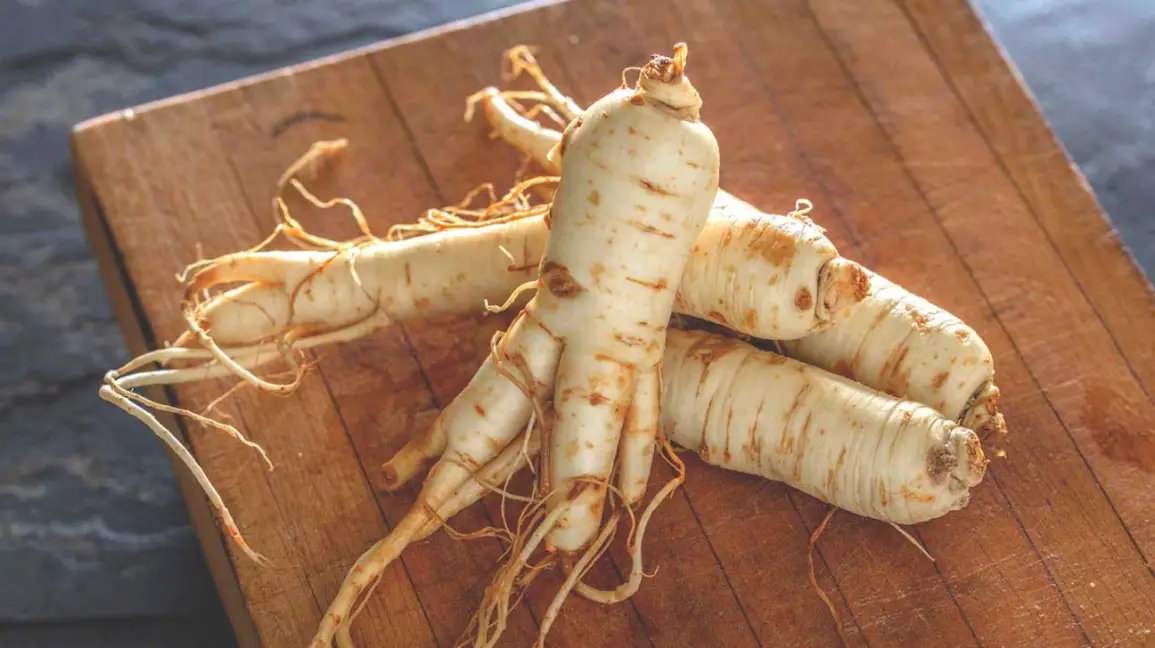Ginseng

Ginseng, a prized herb with a rich history spanning centuries, holds a significant place in both traditional medicine and modern health practices. This root, revered for its potential health benefits and adaptogenic properties, has captivated cultures worldwide. From its origins in ancient herbal remedies to its cultivation in modern farms, ginseng continues to be a subject of scientific research and cultural intrigue. Explore the fascinating world of ginseng as we delve into its origins, types, health benefits, and the sustainability efforts aimed at preserving this valuable botanical resource.
Introduction to Ginseng
What is Ginseng?
Ginseng – the OG of herbal remedies, is a root that’s been getting all the love in traditional medicine for centuries. It’s like the Beyoncé of the herb world – powerful, versatile, and with a reputation that precedes itself.
The Significance of Ginseng in Traditional Medicine
Forget about fancy pharmaceuticals; it has been the go-to healer in traditional medicine for ages. It’s basically the rockstar remedy for a variety of ailments, from boosting energy to improving mental clarity. Move over, aspirin – there’s a new sheriff in town.
History and Cultural Significance
Origins and Historical Use
It isn’t just some trendy root – it’s been around the block for centuries. From ancient China to Native American tribes, this little root has been making waves in the health and wellness scene since forever. It’s like the Indiana Jones of botanicals, but with less fedora and more healing vibes.
Ginseng in Different Cultures and Traditions
It isn’t just popular in one corner of the globe – oh no, this root is a cosmopolitan superstar. It’s been embraced by various cultures and traditions worldwide, each putting their own spin on how to use it. It’s like the cool kid at the global health party – everyone wants a piece of the ginseng action.
Types and Varieties of Ginseng
Asian Ginseng (Panax ginseng)
Asian ginseng – the OG ginseng variety. It’s the hotshot in traditional Chinese medicine, known for its adaptogenic powers and energy-boosting mojo. If ginseng were a superhero, Asian ginseng would be the caped crusader leading the charge.
American Ginseng (Panax quinquefolius)
American ginseng – the ginseng cousin from across the pond. Native to North America, this variety is like the chill younger sibling of Asian ginseng, known for its calming effects and subtle, yet effective, healing properties. It’s the zen master of the ginseng family.
Health Benefits and Medicinal Uses
Traditional Uses in Herbal Medicine
Ginseng isn’t just a pretty face; it’s got the goods to back up its reputation. From boosting immunity to improving cognitive function, ginseng has been the secret weapon in traditional herbal medicine for eons. It’s like the Swiss Army knife of remedies – versatile, reliable, and always there when you need it.
Modern Research and Scientific Evidence
In a world where “show me the science” is the mantra, ginseng doesn’t disappoint. Modern research has been digging into the health benefits of ginseng, uncovering its potential in treating everything from diabetes to stress. It’s like ginseng went to grad school and came back armed with a ton of impressive studies to back up its claims.
Scientific Research and Studies
Current Research Trends
It has been a hot topic in the scientific community with researchers diving into its potential health benefits and medicinal properties. From boosting energy levels to improving cognitive function, the current trend in research is to uncover more about ginseng’s diverse applications.
Clinical Studies on Ginseng’s Efficacy
Various clinical studies have delved into the efficacy of this supplement in treating conditions such as fatigue, stress, and even improving immune function. While results are promising, more research is needed to fully understand the extent of ginseng’s therapeutic potential.
Growing and Harvesting
Cultivation Methods
It’s cultivation is an art form in itself, with growers utilizing both traditional and modern techniques to nurture this precious root. From shaded forests to controlled greenhouse environments, the methods of cultivating ginseng vary but all aim for high-quality yields.
Harvesting Practices and Sustainability
Harvesting it is a delicate process that requires patience and precision. Sustainable practices such as replanting harvested areas and respecting maturity timelines are crucial to ensure the longevity of ginseng populations and maintain ecological balance.
Sustainability and Conservation Efforts
Challenges in Ginseng Conservation
Ginseng faces challenges in the wild due to over-harvesting, habitat loss, and illegal poaching. Conservation efforts are essential to protect this valuable plant and preserve its genetic diversity for future generations.
Initiatives and Practices for Sustainable Harvesting
To combat the threats to ginseng populations, initiatives promoting sustainable harvesting practices have emerged. These include certification programs, regulated harvesting seasons, and community-led conservation projects to safeguard the future of ginseng.
Common Myths and Misconceptions
Debunking popular misconceptions
It has its fair share of myths circulating, from being a cure-all to having no scientific backing. By separating fact from fiction, we can better appreciate this herb for what it is – a valuable botanical with proven health benefits when used conscientiously.In conclusion, it stands as a testament to the enduring allure of natural remedies and the ongoing quest for wellness. With a blend of tradition and modern science, ginseng’s story continues to unfold, offering a glimpse into the intersection of ancient wisdom and contemporary health practices. As we appreciate the cultural significance and therapeutic potential of ginseng, let us also embrace the importance of sustainable practices to ensure its availability for generations to come.











